#CAD Workflow
Explore tagged Tumblr posts
Text
🚀 Unlock the Future of Design with ProtoTech's CAD Automation Tools! 🛠️

🚀 Discover the Future of CAD with ProtoTech! 🚀
Struggling with repetitive design tasks? ProtoTech's 𝐂𝐀𝐃 𝐀𝐮𝐭𝐨𝐦𝐚𝐭𝐢𝐨𝐧 𝐓𝐨𝐨𝐥𝐬 are here to revolutionize your workflow! Discover how our innovative solutions can streamline your design process, enhance productivity, and elevate your projects to new heights. 💡
✨ Key Features:
𝐀𝐮𝐭𝐨𝐦𝐚𝐭𝐞𝐝 𝐂𝐀𝐃 𝐂𝐮𝐬𝐭𝐨𝐦𝐢𝐳𝐚𝐭𝐢𝐨𝐧: Tailor your designs effortlessly with our advanced automation capabilities.
𝐒𝐞𝐚𝐦𝐥𝐞𝐬𝐬 𝐈𝐧𝐭𝐞𝐠𝐫𝐚𝐭𝐢𝐨𝐧: Easily integrate with popular CAD software for a smooth, efficient workflow.
𝐀𝐝𝐯𝐚𝐧𝐜𝐞𝐝 𝐒𝐜𝐫𝐢𝐩𝐭𝐢𝐧𝐠: Utilize powerful scripting tools to automate complex tasks.
𝐀𝐮𝐭𝐨𝐦𝐚𝐭𝐞𝐝 𝐏𝐫𝐨𝐜𝐞𝐬𝐬𝐞𝐬: Save time with automated repetitive tasks, allowing you to focus on creativity.
𝐄𝐫𝐫𝐨𝐫 𝐑𝐞𝐝𝐮𝐜𝐭𝐢𝐨𝐧: Minimize manual errors and ensure design accuracy.
🔍 Dive into our latest blog post to learn more about how ProtoTech is transforming the CAD landscape with cutting-edge technology.
🔗 Read the full article here: https://prototechsolutions.com/blog/key-features-and-capabilities-of-prototechs-cad-automation-tools/
#Automation#CAD#CAD Design#Design Automation#CAD Workflow#Design Innovation#CAD Automation#ProtoTech Tools#Efficiency In Design#Engineering#ProtoTech Solutions
0 notes
Text
Structural Engineering Projects with BIM-Integrated Precast Concrete Design
Discover the future of construction with BIM-Integrated Precast Concrete Design! This innovative approach revolutionizes how we plan and execute structural engineering projects. By integrating Building Information Modeling (BIM) with precast concrete, we achieve unparalleled precision, efficiency, and sustainability. Say goodbye to traditional methods and embrace a smarter, more streamlined process that saves time and reduces costs.
Join the movement towards modern construction excellence! BIM-Integrated Precast Concrete Design not only enhances collaboration among project stakeholders but also ensures higher quality and consistency in every build. From concept to completion, experience the benefits of cutting-edge technology in your structural engineering projects. Let's build the future together! 🏗️✨
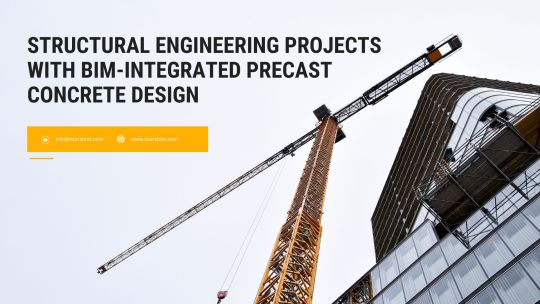
#precast CAD drawings#precast concrete design#precast concrete design workflow#precast constructions using BIM software#precast engineering design
0 notes
Text
HOW CAD AUTOMATION TOOLS STREAMLINE WORKFLOW & BOOSTS PRODUCTIVITY

Discover the transformative impact of CAD Automation in simplifying intricate design tasks and enhancing the overall quality of your final product.
Read our latest article to explore how CAD Automation tools are revolutionizing workflows, reducing errors, and optimizing productivity.
0 notes
Text
How Cloud-Based CAD Drafting Enhances Team Collaboration Across Geographies

The digital transformation of industries has opened new doors for professionals, particularly in design, engineering, and architecture, to collaborate more efficiently. Cloud-based CAD (Computer-Aided Design) drafting tools are at the heart of this transformation, enabling remote collaboration and reshaping how teams approach complex design tasks. This shift offers numerous advantages, from real-time collaboration to cost savings. Let’s explore the key benefits of using cloud-based CAD drafting for remote collaboration.
1. Real-Time Collaboration Across Geographies
One of the most significant advantages of cloud-based CAD platforms is the ability for teams to work together in real time, no matter where they are located. Traditionally, team members had to be in the same office or rely on cumbersome file-sharing methods that caused versioning issues and delays.
With cloud-based solutions, changes made to a design are updated instantly, and team members can see these adjustments in real-time. This eliminates the confusion of working with outdated files and ensures that everyone is on the same page, streamlining the design process. For example, in architecture or civil engineering projects where multiple stakeholders, such as architects, engineers, and contractors, are involved, real-time collaboration ensures quick feedback and decision-making.
2. Increased Accessibility and Flexibility
Cloud-based CAD platforms are accessible from anywhere with an internet connection. This flexibility is essential in today’s globalized workforce, where many professionals work remotely or from multiple locations. Cloud CAD tools allow designers, engineers, and drafters to access their work whether they are at home, in the office, or on-site with a client.
This level of accessibility also means that last-minute changes can be made on the go. For example, if a designer is on-site with a client and needs to modify a design based on the client’s feedback, they can quickly make the necessary changes and save them directly to the cloud. This flexibility allows for faster response times, increased productivity, and greater client satisfaction.
3. Streamlined Communication and Collaboration
Effective communication is critical in any project, and cloud-based CAD platforms enhance it by providing integrated communication tools within the platform. These tools allow team members to discuss designs, leave comments, share feedback, and make annotations directly on the project files.
This communication is more efficient than relying on emails or external messaging apps, where feedback can easily get lost or misunderstood. By keeping all communication within the platform, stakeholders can easily track changes, review comments, and resolve issues quickly, reducing the potential for costly errors and project delays.
4. Reduced Software and Hardware Costs
Traditional CAD systems often require powerful hardware with significant storage and computing capacity, which can be costly for companies, especially smaller firms. Additionally, traditional CAD software often comes with hefty licensing fees and requires regular updates, further increasing the cost.
Cloud-based CAD platforms reduce these costs by offloading the heavy processing and storage requirements to the cloud. As a result, users can work from virtually any device, whether it’s a high-powered workstation or a more modest laptop. Furthermore, cloud-based CAD platforms are often subscription-based, allowing companies to pay for only the features and usage they need, rather than making a large upfront investment in software.
5. Automatic Version Control and Data Management
One of the most common challenges in traditional CAD environments is version control. When multiple users work on the same project, it can be difficult to track which version of the file is the most current, leading to confusion and potential rework.
Cloud-based CAD platforms solve this issue by automatically saving changes and keeping a detailed version history. This means that team members can always access the latest version of the design, and in the event of an error, they can easily revert to a previous version. Furthermore, cloud platforms often include robust data management tools that allow users to organize and categorize files, making it easier to manage large projects with multiple design iterations.
6. Enhanced Security and Data Backup
Data security is a top concern for companies, particularly when working with sensitive design files. Cloud-based CAD platforms typically offer advanced security features, such as encryption and multi-factor authentication, to protect valuable data from unauthorized access.
Additionally, cloud platforms provide automatic backups, ensuring that design files are never lost due to hardware failure or accidental deletion. In a traditional CAD environment, losing project files due to a computer crash can result in hours or even days of lost work. With cloud-based solutions, this risk is mitigated, and data is stored securely in redundant, geographically distributed servers, ensuring business continuity.
7. Seamless Integration with Other Tools and Software
Many cloud-based CAD platforms are designed to integrate seamlessly with other tools and software commonly used in design and engineering workflows. This integration allows teams to streamline their processes by using CAD data in conjunction with other project management, BIM (Building Information Modeling), or CAM (Computer-Aided Manufacturing) tools.
For instance, architectural firms using BIM software can easily import CAD designs into their models, ensuring that the entire project workflow, from concept to construction, is fully integrated and cohesive. Similarly, CAD designs can be used in CAM software for prototyping and manufacturing, creating a smooth transition from design to production.
8. Improved Project Tracking and Accountability
Cloud-based CAD platforms often include tools that allow managers to track the progress of a project in real-time. These tools can provide insights into who is working on which part of the design, how long certain tasks are taking, and whether the project is on schedule. This level of transparency ensures that everyone is held accountable for their contributions and can help identify potential bottlenecks early.
By having a clear view of the project’s progress, managers can make informed decisions about resource allocation, timelines, and potential adjustments, ultimately leading to more successful project outcomes.
9. Collaboration with Clients and External Stakeholders
Cloud-based CAD platforms make it easier to collaborate with clients and other external stakeholders, such as contractors or consultants. Clients can be given controlled access to view the design files, leave comments, and provide feedback, all within the platform. This level of involvement can increase client satisfaction and help ensure that the final design meets their expectations.
Additionally, by allowing external stakeholders to access the design files in real-time, issues can be identified and resolved more quickly, reducing the likelihood of costly changes later in the project.
10. Sustainability and Eco-Friendly Practices
Cloud-based CAD platforms contribute to sustainability efforts by reducing the need for physical resources and minimizing the environmental impact of large-scale infrastructure, such as powerful workstations. Because cloud-based solutions can be run on lower-powered devices and require less energy, companies can reduce their carbon footprint.
Additionally, cloud-based platforms often promote more efficient workflows, reducing the need for physical prototypes and rework, which can lead to a reduction in material waste.
Conclusion
Cloud-based CAD drafting offers numerous benefits for remote collaboration, from real-time teamwork to cost savings and increased flexibility. As the demand for remote work continues to rise, these platforms are becoming essential for organizations seeking to enhance productivity, streamline communication, and stay competitive in the ever-evolving world of design and engineering. By adopting cloud-based CAD tools, companies can future-proof their operations and ensure that their teams can collaborate effectively, regardless of location.
#CAD Drafting#Cloud CAD Drafting#Remote Architects and Engineers#Remote Collaboration#CAD tools#streamline project#workflows#reduce delays#productivity#geographical
0 notes
Text
Elevate Efficiency: Unleash the Power of CAD Workflow Automation
Streamline your design process with CAD workflow automation. Boost efficiency and productivity by automating repetitive tasks, reducing errors, and accelerating project timelines. Discover how our CAD automation solutions can revolutionize your design workflow and empower your team to focus on creative innovation.
0 notes
Text
I can't tell you which laptop to buy
Over the years, I have been asked "Which laptop should I buy?" many, many times. We have now arrived at a point where I can no longer meaningfully answer this question.
In the past, I would have said something like "Get a laptop with enough RAM, and make sure the keyboard, trackpad, and display all work for you. You can't swap out the keyboard, mouse and display like you can in a desktop."
In the past, I would have said something like "Are you just using it for e-mail, Facebook, and Netflix? Are you doing a lot of office productivity stuff? Will you be giving slide presentations? Do you also want to do some light gaming? Do you need an SD card slot for your digital camera? Are you doing video editing/CAD modelling/cinematic 3D rendering?"
It really depends on what kind of laptop you want. You could want a desktop replacement, because you don't have the space for PC. You could want a "luggable" machine that you take from your office to the meeting room or the lecture hall, and back and occasionally to a different location in the trunk of your car. You could want a portable laptop that you keep in a laptop bag, backpack, or briefcase, and sometimes use on your lap or in a café if you are one of these people. You could want a "light" laptop that you carry with you at all times.
I still couldn't tell you which laptop to buy. So many people these days use their phone or a tablet for e-mail, facebook, and netflix that it doesn't really make sense to recommend a small and light laptop. You'd want to be a step above that. So many people use the "cloud" for all their documents and data, so it doesn't make sense for them to think about having a large HDD. If you own a gaming a console and a desktop PC, and you write your e-mails on a tablet, it doesn't really make sense to have a cheap laptop, but it also doesn't make sense to have a big laptop, unless you change your workflow.
Some people still need a CD drive, a large hard disk, or VGA-out, but usually there's a USB-C dock for that use case.
If you never use your laptop anyway, you may as well give Ubuntu a chance. It even runs Steam!
72 notes
·
View notes
Text
This is very interesting: a novel CAD package built on a text based file format that should allow you to check files into version control and automate tasks, plus a geometry engine optimized for GPU compute.
It's also got some noteworthy backers, the appeal of this is obvious to anyone who has ever tried to integrate CAD into a larger workflow, it takes a lot of manual shunting of files and tagging of releases and fighting with export formats, even with all the features SolidWorks and Inventor and SolidEdge have added over the years.
It's not parametric, of course, because that's a totally different approach to modelling that's much harder to automate this way. I'm not sure if that's reasonably possible without just doing SVG bullshit.
There's an LLM powered Text To CAD thing where you are meant to be able to just describe an object and get back the CAD for it but at least for now it can only do things that are relatively simple, it feels a little like a crutch to deal with how slow generating simple parts through code CAD can be. Defining an I-beam parametrically is the kind of thing you can do basically without thinking. I guess you'd probably want to have a library of parametrically defined common parts to pull from once you've been doing this for five minutes.
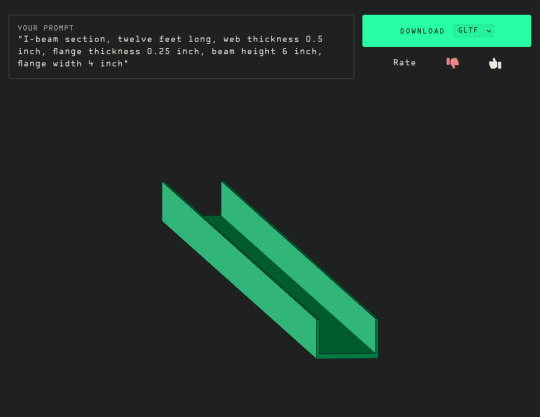
Close but no cigar! It does get the flange and web the right way around. Using inches because I assume it's trained in Freedomheit.
They're keeping their geometry solver closed source, but I'd be interested to see if declarative cad like this takes off in industry, it's a slow moving space but hardware design is increasingly available to startups and small businesses who might be willing to throw away a lot of old CAD philosophy.
A lot of industry uses constructive CAD like this, the US military has BRL-CAD. Never could get my head around it.
27 notes
·
View notes
Text
How ERP Software for Engineering Companies Improves Operational Efficiency
In today's competitive market, engineering companies are under immense pressure to deliver innovative solutions, maintain cost-efficiency, and meet tight deadlines—all while ensuring the highest standards of quality. As the engineering industry becomes more complex and digitally driven, operational efficiency has become a key metric for success. One of the most transformative tools driving this change is ERP (Enterprise Resource Planning) software.

For companies seeking to streamline their operations, ERP software for engineering companies provides a centralized platform that integrates every function—ranging from procurement, design, production, finance, HR, and project management. In India, especially in industrial hubs like Delhi, the demand for such software is growing rapidly. Let us explore how ERP systems significantly enhance operational efficiency and why choosing the right ERP software company in India is vital for engineering enterprises.
Centralized Data Management: The Foundation of Efficiency
One of the major challenges engineering companies face is managing vast amounts of data across departments. Manual entries and siloed systems often lead to redundancies, errors, and miscommunication. With ERP software for engineering companies in India, organizations gain access to a unified database that connects all operational areas.
Real-time data availability ensures that everyone, from the design team to procurement and finance, is working with the latest information. This reduces rework, improves collaboration, and speeds up decision-making, thereby increasing efficiency.
Streamlined Project Management
Engineering projects involve numerous stages—from planning and design to execution and maintenance. Tracking timelines, resources, costs, and deliverables manually or via disparate systems often results in delays and budget overruns.
Modern engineering ERP software companies in Delhi provide robust project management modules that allow firms to plan, schedule, and monitor projects in real time. This includes milestone tracking, Gantt charts, resource allocation, and budget forecasting. Managers can gain visibility into bottlenecks early on and reallocate resources efficiently, ensuring timely delivery.
Automation of Core Processes
Automating routine tasks is one of the key advantages of implementing ERP software. From generating purchase orders and invoices to managing payroll and inventory, ERP eliminates the need for repetitive manual work. This not only saves time but also minimizes human error.
The best ERP software provider in India will offer customizable automation workflows tailored to the specific needs of engineering companies. For instance, when a material stock reaches a minimum threshold, the ERP system can automatically generate a requisition and notify the purchasing team. This ensures zero downtime due to material shortages.
Enhanced Resource Planning and Allocation
Resource planning is crucial in engineering projects where labour, materials, and machinery must be utilized efficiently. A good ERP software for engineering companies provides detailed insights into resource availability, utilization rates, and project requirements.
By analysing this data, companies can better allocate resources, avoid overbooking, and reduce idle time. This leads to significant cost savings and ensures optimal productivity across the board.
youtube
Integration with CAD and Design Tools
Many ERP solution providers in Delhi now offer integration with design and CAD software. This is particularly useful for engineering firms where design data is often needed for procurement, costing, and production.
When ERP is integrated with CAD, design changes automatically reflect across related departments. This seamless flow of information eliminates miscommunication and ensures that downstream processes such as procurement and manufacturing are aligned with the latest design specifications.
Real-time Cost and Budget Management
Keeping engineering projects within budget is a continuous challenge. Unexpected costs can arise at any stage, and without proper monitoring, they can spiral out of control. ERP software providers in India equip engineering companies with real-time budget tracking tools.
From initial cost estimation to actual expenditure, companies can monitor every aspect of the financials. Alerts can be configured for budget deviations, helping management take corrective action promptly. This financial control is a cornerstone of operational efficiency and long-term profitability.
Improved Compliance and Documentation
Engineering companies must adhere to various compliance standards, certifications, and audit requirements. Maintaining accurate documentation and audit trails is critical. ERP systems automate compliance tracking and generate necessary documentation on demand.
By partnering with trusted ERP software companies in Delhi, engineering firms can ensure they meet industry standards with minimal administrative overhead. Features like document versioning, digital signatures, and compliance checklists help organizations stay audit-ready at all times.
Scalable and Future-ready Solutions
One of the biggest advantages of working with a reputed engineering ERP software company in Delhi is access to scalable solutions. As engineering businesses grow, their operational complexities increase. Modern ERP systems are modular and scalable, allowing businesses to add new functionalities as needed without disrupting existing operations.
Moreover, cloud-based ERP solutions offer flexibility, remote access, and lower infrastructure costs. These are especially beneficial for engineering companies that operate across multiple locations or work on-site with clients.
Enhanced Customer Satisfaction
Efficient operations lead to improved delivery timelines, better quality products, and faster customer service—all of which directly impact customer satisfaction. With ERP, engineering companies can maintain accurate production schedules, meet delivery deadlines, and respond to customer queries with real-time information.
By choosing the right ERP software for engineering companies in India, firms not only improve internal operations but also build a strong reputation for reliability and professionalism among their clients.
Choosing the Right ERP Partner
With the growing number of ERP solution providers in India, selecting the right partner is crucial. Here are a few factors to consider:
Domain Expertise: Choose a vendor with experience in the engineering sector.
Customization: The software should be tailored to suit your specific workflows.
Scalability: Ensure the ERP solution grows with your business.
Support & Training: Opt for companies that provide ongoing support and employee training.
Integration Capabilities: Check whether the ERP can integrate with your existing systems, including CAD tools, financial software, etc.
Trusted ERP software companies in Delhi like Shantitechnology (STERP) stand out because they offer deep industry knowledge, scalable platforms, and dedicated customer support—making them ideal partners for engineering businesses seeking to transform operations.
youtube
Final Thoughts
In a rapidly evolving business landscape, engineering companies must adopt smart technologies to stay ahead. ERP software is not just an IT solution—it is a strategic tool that can redefine how engineering firms manage their projects, people, and performance.
From streamlining project workflows and automating routine tasks to enhancing collaboration and boosting resource efficiency, ERP solutions deliver measurable gains across the organization. For those looking to make a digital leap, partnering with a top-rated ERP software company in India can be the difference between stagnation and scalable success.
Looking for a reliable ERP partner? Shantitechnology (STERP) is among the leading ERP solution providers in Delhi, offering tailored ERP software for engineering companies to help you boost productivity, reduce costs, and grow sustainably. Contact us today to learn more!
#Engineering ERP software company#ERP software for engineering companies in India#ERP solution providers#ERP software for engineering companies#ERP software companies#ERP software providers in India#Gujarat#Maharashtra#Madhyapradesh#ERP solution providers in India#ERP for manufacturing company#Delhi#Hyderabad#ERP Software#Custom ERP#ERP software company#Manufacturing enterprise resource planning software#Bengaluru#ERP software company in India#Engineering ERP Software Company#Best ERP software provider in India#Manufacturing ERP software company#Manufacturing enterprise resource planning#ERP modules for manufacturing industry#Best ERP for manufacturing industry#India#Youtube
5 notes
·
View notes
Text
How to Integrate 3D Map Illustration into Site Analysis for Architectural Projects

Integrate 3D Map Illustration into Site Analysis
In the world of architecture and urban planning, understanding the terrain, infrastructure, and environment is critical before laying the first brick. Traditional site analysis methods have served us well, but as technology advances, so do our tools. One of the most innovative advancements in this space is the use of 3D Map Illustration and 3D Vector Maps in architectural planning.
Combining artistic clarity with technical depth, 3D map illustrations offer more than just visual appeal—they provide actionable insights. Let’s explore how integrating these advanced tools into your Architecture Illustration process can streamline site analysis and improve project outcomes.
What Is a 3D Map Illustration?
Unlike standard 2D maps, these illustrations display terrain, buildings, infrastructure, vegetation, and other features in a three-dimensional space. They give architects, engineers, and planners a much deeper understanding of the site conditions.
Often created using GIS data, CAD software, and digital illustration tools, 3D map illustrations are ideal for both technical analysis and presentation purposes. They are more than just artistic renderings—they’re functional, data-driven visual tools.
Why Use 3D Map Illustrations in Site Analysis?
It includes examining a location’s topography, climate, vegetation, zoning, infrastructure, and accessibility. Here’s why 3D Vector Maps and 3D map illustrations are revolutionizing this process:
1. Enhanced Spatial Understanding
While 2D drawings give flat representations, 3D Map Illustrationprovides a volumetric perspective.
2. Data Integration
Modern 3D vector maps can incorporate real-time data such as topography, utilities, and environmental factors. This integration helps identify potential challenges, like flood zones or unstable terrain, early in the design process.
3. Improved Client Communication
With Architecture Illustration in 3D, clients and community members can easily understand and visualize the proposed development within its context.
4. Better Decision-Making
Using 3D maps during site analysis supports better decision-making. Whether it’s choosing optimal building orientation, identifying natural shade zones, or evaluating how structures impact sightlines, the 3D visualization simplifies complex evaluations.
Step-by-Step: Integrating 3D Map Illustration into Site Analysis
Let’s break down how to incorporate 3D map illustration and 3D Vector Maps into your architectural site analysis workflow.
Step 1: Gather Site Data
Topographical surveys
GIS layers
Aerial imagery
Zoning regulations
Infrastructure maps (roads, utilities, drainage)
Environmental reports
Step 2: Choose the Right Tools and Software
There are many tools available for creating 3D Vector Maps and architectural illustrations. Some of the popular ones include:
SketchUp – Great for quick, interactive 3D models.
Blender or Cinema 4D – For highly stylized 3D illustrations.
Adobe Illustrator (with plugins) – To enhance vector-based output.
Choose a combination that fits both your technical needs and aesthetic style.
Step 3: Create the Base Terrain Model
This forms the physical base upon which other features—roads, buildings, vegetation—will be layered. Many software platforms can convert contour lines and elevation points into 3D surfaces automatically.
Step 4: Add Site Features Using Vector Layers
Now incorporate other elements such as:
Roads and transportation networks
Water bodies and drainage systems
Green zones and vegetation
Existing structures or utilities
These layers, typically drawn as 3D Vector Maps, provide an accurate spatial layout of all critical site components.
Step 5: Apply Architecture Illustration Techniques
This is where artistry meets data. Use Architecture Illustration principles to render the map with aesthetic enhancements:
Textures for terrain (grass, sand, water, urban)
Stylized representations of trees, buildings, and shadows
Labeling of key zones and infrastructure
Lighting effects for better depth perception
Step 6: Use for Analysis and Reporting
Once the map is complete, use it to conduct site analysis:
Determine view corridors and sightlines
Analyze sun paths and shading
Evaluate accessibility and circulation
Review spatial relationships and setbacks
These insights can then be documented in your architectural site report, with visuals that clearly back up your recommendations.
Use Cases: Where 3D Map Illustration Excels
Here are a few examples of how 3D Vector Maps are applied in real architectural projects:
Urban Master Planning
City planners use 3D maps to visualize entire neighborhoods, analyze density, and simulate transportation flows before construction begins.
Resort and Campus Design
When designing large areas like resorts or educational campuses, 3D illustrations help stakeholders understand zoning, amenities, and pedestrian routes.
Landscape Architecture
Landscape architects use 3D map illustration to study the interaction between built environments and nature—perfect for planning gardens, parks, and open spaces.
Infrastructure Projects
Infrastructure projects, like bridges, tunnels, and roads, benefit from 3D visuals to navigate complex terrain and urban constraints.
Integrating 3D Vector Maps in Projects
Here are a few additional benefits of incorporating 3D Vector Maps at the start of your architectural workflow:
Reduces design errors by visualizing constraints early
Accelerates approvals with more convincing presentations
Encourages collaboration across disciplines (engineering, landscaping, urban planning)
Saves cost and time by identifying site issues before they become expensive problems
The Future of Architecture, Illustration and Mapping
We’re heading toward a future where maps aren’t just flat diagrams—they’re immersive, interactive environments.
From drone-based site scans to AR-compatible 3D maps, architectural site analysis is becoming more data-rich and user-friendly. It’s no longer about lines and elevations—it’s about experiences and environments.
Final Thoughts
Incorporating 3D Map Illustration and 3D Vector Maps into your site analysis isn’t just a trend—it’s a game-changer. These tools enhance your technical accuracy, improve communication, and ultimately lead to more successful architectural outcomes.
Whether you’re designing a single home or planning an entire urban district, using modern Architecture Illustration tools helps you see the full picture—literally and figuratively.
So, as you gear up for your next architectural project, make sure your toolkit includes more than just rulers and blueprints.
2 notes
·
View notes
Text

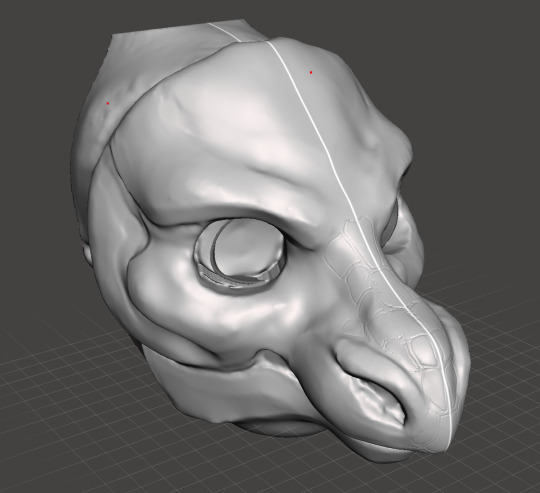
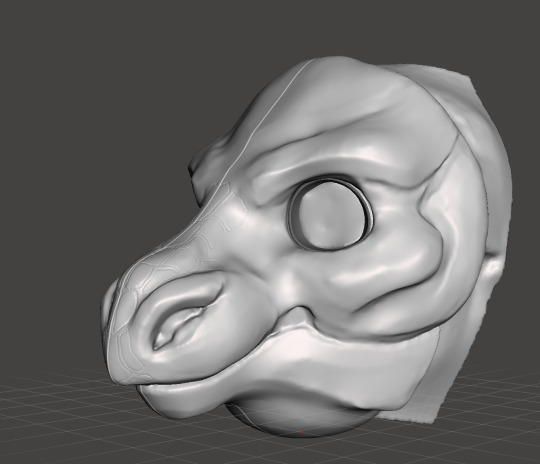
Working on a new slimline head base for more human proportions, so for LARP, Cosplay, partial fursuits, anything where you'd want to wear a clothed or well-fitted costume with. I prefer sculpting these on CAD rather than Clay so I get to change up my workflow day to day. Hoping to have this available in-store before the end of the year
#larp costume#larp mask#cosplay#anthro#costume mask#beastkin#furry#scaley#scalie#dragonkin#dragon mask#dragon costume#theriomythic#dragon therian#otherkin#alterhuman
18 notes
·
View notes
Text
I don’t have space for the homestuck epilogues on my laptop you need to understand i need that space for several slightly different but broadly overlapping cad workflow packages
2 notes
·
View notes
Text
6 BEST PRACTICES OF CAD AUTOMATION GIVEN BY INDUSTRY EXPERTS
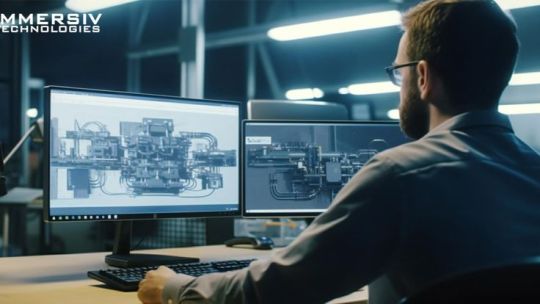
Discover top CAD automation tips from industry experts.
Optimize workflows with these 6 best practices for efficient and precise design processes.
0 notes
Text
CAD Automation: Redefining the Design Landscape for Success

In the world of modern engineering and design, Computer-Aided Design (CAD) has revolutionized the way products are conceived, developed, and manufactured. As technology continues to advance, CAD automation emerges as a key player in enhancing design efficiency and fostering innovation. This blog post delves into the realm of CAD automation, exploring its significance, benefits, challenges, and potential future trends.
Understanding CAD Automation
CAD automation refers to the process of utilizing software tools and scripts to streamline various aspects of the design process. It involves automating repetitive tasks, generating complex designs, and facilitating seamless collaboration between designers and engineers. The goal of CAD automation is to reduce manual effort, minimize errors, improve consistency, and accelerate the overall design cycle.
Significance of CAD Automation
1. Efficiency Enhancement:
Automating routine and time-consuming tasks, such as dimensioning, detailing, and generating drawings, allows designers and engineers to allocate more time to creative and high-value tasks. This not only accelerates the design process but also increases productivity and reduces the risk of human errors.
2. Design Iteration and Optimization:
Automation tools enable rapid design iteration. Designers can easily generate variations of a concept, test different parameters, and evaluate multiple scenarios. This iterative process aids in identifying the most optimal design solution and fosters innovation.
3. Consistency and Standardization:
CAD automation enforces design standards and guidelines consistently across projects. This ensures that designs adhere to industry best practices and regulatory requirements, reducing the chances of errors caused by deviations from standards.
4. Complex Geometry and Customization:
Automated scripts and parametric modeling techniques enable the creation of intricate and complex geometries that might be challenging to achieve manually. Additionally, automation allows for easy customization of designs to meet specific customer requirements.
5. Collaboration and Communication:
CAD automation tools facilitate seamless collaboration between cross-functional teams. Design modifications, updates, and feedback can be efficiently communicated and integrated into the design process, enhancing teamwork and reducing communication gaps.
Benefits of CAD Automation
1. Time Savings:
Automating repetitive tasks drastically reduces the time required for design and drafting. This leads to faster project completion and quicker time-to-market for products.
2. Error Reduction:
Human errors are inevitable in manual tasks, but automation significantly reduces the risk. Consistent and standardized designs generated by automation tools mitigate the chances of costly mistakes.
3. Innovation Encouragement:
By handling routine tasks, designers can focus on exploring innovative design concepts and pushing boundaries. This results in more creative and inventive solutions.
4. Cost Efficiency:
Efficient design processes translate to cost savings. Reduced design time, fewer errors, and optimized designs contribute to lower production costs.
5. Enhanced Quality:
Automation tools ensure that designs adhere to defined standards, leading to higher-quality outputs that meet or exceed customer expectations.
Challenges of CAD Automation
While CAD automation offers numerous benefits, it's important to acknowledge the challenges that come with its implementation:
1. Initial Setup Complexity:
Developing and implementing automation scripts requires specialized skills and time. Setting up an automation workflow can be complex and resource-intensive.
2. Maintenance and Updates:
Automation workflows need continuous monitoring and updates to remain effective. Changes in design requirements or software updates may necessitate adjustments to the automation process.
3. Skill Requirements:
CAD automation demands a certain level of programming and scripting skills. Not all design professionals possess these skills, which might lead to a skill gap within the team.
4. Balancing Automation and Creativity:
While automation improves efficiency, there's a concern that excessive automation might stifle creativity. Striking the right balance is crucial to ensure that designers still have the freedom to innovate.
Future Trends in CAD Automation
The future of CAD automation holds exciting possibilities:
1. AI-Powered Design Generation:
Artificial Intelligence (AI) could play a significant role in generating design concepts based on user inputs and requirements. This could lead to the rapid creation of diverse design options.
2. Cloud-Based Collaboration:
Collaboration tools and CAD software are likely to move towards the cloud, enabling real-time collaboration between team members regardless of their geographical location.
3. Integration with Simulation and Analysis:
Automation could seamlessly integrate design with simulation and analysis tools, allowing for quicker evaluation of design performance and optimization.
4. Generative Design Evolution:
Generative design algorithms, driven by AI, could become more advanced, producing complex designs that consider multiple variables and constraints.
Conclusion
CAD automation is transforming the design landscape by freeing designers from repetitive tasks, empowering them to innovate, and enhancing design efficiency. While challenges exist, the benefits of CAD automation outweigh the drawbacks, and the continuous evolution of technology promises even greater possibilities in the future. Embracing CAD automation can position design teams at the forefront of innovation and efficiency in the rapidly evolving engineering and manufacturing industries.
ProtoTech Solutions' journey into the realm of CAD automation is a testament to the transformative power of technology. Their commitment to streamlining design processes, fostering innovation, and embracing the future sets an inspiring example for the entire design and engineering community. As ProtoTech Solutions continues to pioneer advancements in CAD automation, the design landscape stands poised for a future of unprecedented efficiency, creativity, and collaboration.
#CAD Automation#Design Efficiency#Design Workflow#Engineering Automation#Automation Solutions#Design Technology#AI-driven Design#Design Optimization#CAD Integration#Design Standards#CAD Software#CAD Customization
0 notes
Text
The Evolution of BIM: From 2D Drafting to 7D BIM
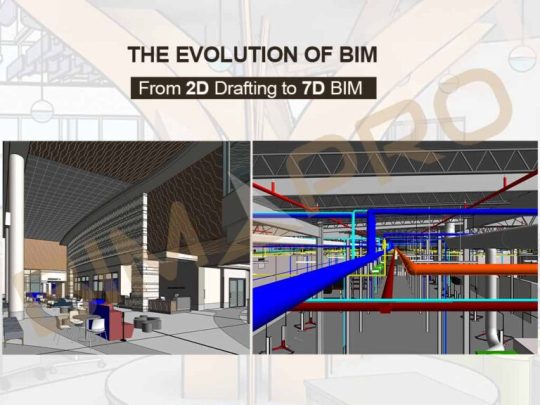
The construction industry has witnessed a remarkable transformation over the past few decades, driven by technological advancements. One of the most significant innovations is Building Information Modeling (BIM). What started as simple 2D drafting has evolved into a comprehensive system encompassing multiple dimensions. From design to maintenance, BIM has revolutionized the way we plan, construct, and manage buildings. In this blog, we will explore the journey of BIM from its early days to the highly advanced 7D BIM we see today.
The Era of 2D Drafting: The Beginning
Before the advent of BIM, architects, engineers, and designers relied on 2D drafting techniques. Blueprints and technical drawings were manually created on paper, requiring immense precision and effort. The introduction of computer-aided design (CAD) in the 1960s and 1970s brought a significant shift, allowing professionals to create digital 2D drawings. However, these drawings remained static representations, often leading to errors, miscommunication, and time-consuming revisions. The lack of data integration meant that project information was scattered, leading to inefficiencies in project execution and management.
Moreover, 2D drafting required extensive manual labor for each stage of the design process. Any changes in the design had to be redrawn from scratch, consuming valuable time. Coordination between different teams was also challenging, as changes in one discipline often led to inconsistencies in others. Errors were only discovered during construction, resulting in costly rework and delays. Additionally, quantity take-offs and bill of materials (BOM) had to be calculated manually, increasing the risk of miscalculations and cost overruns.
The Transition to 3D Modeling: A Game Changer
The limitations of 2D drafting led to the development of 3D modeling. In the late 20th century, software like AutoCAD, Revit, and ArchiCAD introduced the concept of three-dimensional design. 3D modeling provided a more realistic and detailed representation of structures, improving visualization and coordination among stakeholders. Architects and engineers could now see their designs in a virtual environment before construction began, allowing for better planning and reducing costly errors.
Unlike 2D drawings, 3D models allowed for a more intuitive understanding of spatial relationships. Teams could detect clashes between different systems, such as plumbing and electrical, before construction, leading to a significant reduction in errors. However, despite the added dimension, it still lacked data integration and intelligence, as it mainly focused on geometry rather than project information management. At this stage, Level of Development (LOD) concepts started emerging, enabling different stakeholders to define and refine the details of the BIM model at different stages of the project lifecycle.
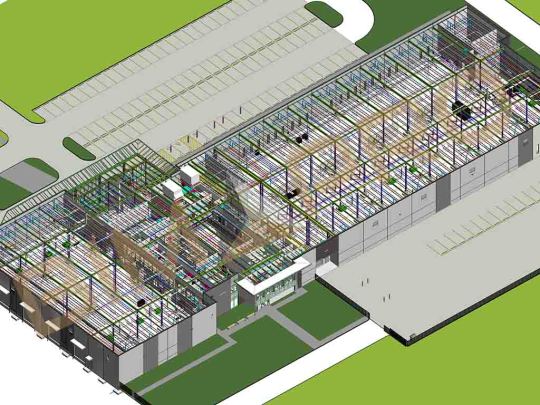
4D BIM: Adding the Time Dimension
The next breakthrough in BIM came with the introduction of the fourth dimension: time. 4D BIM integrates project scheduling with 3D models, enabling stakeholders to visualize the construction sequence over time. This advancement improved project planning, reduced delays, and enhanced collaboration among teams. Contractors could simulate different scenarios, identify potential bottlenecks, and optimize construction workflows.
By linking the construction timeline to the 3D model, project managers could anticipate potential issues, allocate resources efficiently, and ensure smoother project execution. 4D BIM allowed teams to see when each component of the project would be constructed, facilitating better coordination between trades and minimizing on-site conflicts. As a result, construction projects became more predictable, reducing downtime and increasing efficiency.
5D BIM: Incorporating Cost Management
Cost estimation has always been a critical aspect of construction projects. 5D BIM brought financial management into the equation by linking cost data with the 3D model and project schedule. This integration provided accurate cost forecasting, real-time budget updates, and improved decision-making. Stakeholders could analyze cost variations, track expenses, and ensure financial control throughout the project lifecycle.
With 5D BIM, cost estimators and project managers could evaluate different design alternatives and their financial impact, ultimately helping in budget optimization and cost-effective decision-making. Cost changes due to material choices, design modifications, or construction sequences could be assessed in real time, preventing budget overruns. Automated quantity take-offs became more efficient and accurate, ensuring that project cost estimates aligned closely with actual construction costs. This real-time tracking of costs made construction more financially transparent, ensuring stakeholders had a clear understanding of budget allocations at every stage.
6D BIM: Enhancing Sustainability and Facility Management
As sustainability became a key focus in the construction industry, 6D BIM emerged to address environmental concerns. This dimension incorporates energy analysis, lifecycle assessment, and sustainability metrics into BIM models. Building owners and facility managers can use 6D BIM to optimize energy efficiency, reduce carbon footprints, and plan for long-term maintenance.
Additionally, it aids in predictive maintenance by providing insights into building performance over time. With real-time data and simulations, sustainability goals such as energy efficiency, material durability, and operational cost reductions can be achieved, ensuring environmentally responsible building designs. Green building certifications such as LEED and BREEAM can be seamlessly integrated into the BIM model, allowing for data-driven decision-making in sustainability planning.
By leveraging 6D BIM, facility managers can track energy consumption, perform preventive maintenance, and monitor the building’s carbon footprint. It enables owners to make data-driven decisions that enhance the building’s efficiency and extend its lifespan, ultimately leading to significant cost savings and environmental benefits. COBie (Construction-Operations Building Information Exchange) standards also play a critical role at this stage, ensuring that asset data is structured and efficiently transferred for use in facility management.
7D BIM: The Future of Building Management
The most advanced stage of BIM, 7D BIM, integrates facility management with real-time data. It allows stakeholders to manage the entire lifecycle of a building, from design to demolition. By incorporating asset management, maintenance scheduling, and IoT integration, 7D BIM enhances operational efficiency and reduces maintenance costs.
Building owners can track the performance of building components, automate maintenance tasks, and ensure long-term sustainability. With the growing adoption of smart buildings and IoT-enabled systems, 7D BIM is paving the way for more connected, efficient, and resilient building management practices. Facility managers can use digital twins of buildings to simulate operational scenarios, predict maintenance needs, and improve asset longevity.
Through integration with IoT, sensors can provide real-time data on occupancy, temperature, and equipment performance, enabling automated responses and predictive maintenance. This not only enhances comfort and safety but also significantly reduces operational costs, making 7D BIM an essential tool for modern building management. Furthermore, as-built BIM models ensure that facility managers have an accurate digital representation of the constructed building, enabling informed decision-making throughout the building’s lifecycle.
Benefits of BIM Evolution:
Here are some expanded benefits of BIM evolution:
Improved Collaboration and Coordination Accurate Quantity Take-Offs and Cost Estimation Reduced Errors, Rework, and Risks Enhanced Time Management and Scheduling Improved Facility Management and Lifecycle Analysis Sustainability and Energy Efficiency Higher Level of Development (LOD) for Better Detailing
Conclusion
The evolution of BIM has transformed the way we design, construct, and manage buildings. From simple 2D drawings to the intelligent and data-driven 7D BIM, the construction industry has embraced a new era of efficiency, sustainability, and innovation. As technology continues to advance, we can expect even more dimensions and capabilities to be integrated into BIM, shaping the future of architecture and engineering. Whether you are an architect, contractor, or building owner, understanding and leveraging BIM is no longer an option but a necessity for success in the modern construction landscape.
1 note
·
View note
Text
Summary Analysis of CNC Milling Process

In modern manufacturing, CNC milling technology is widely used for its high precision and flexibility. Whether it's a mechanical part, an automotive component, or a component for a medical device, CNC milling provides excellent machining results.
What is CNC Milling?
CNC milling is a computer-controlled machining process that utilises a rotating tool to cut a workpiece. CNC milling allows for greater accuracy and consistency than traditional manual milling. It is often combined with other machining methods (e.g. turning, drilling) to meet different and diverse manufacturing needs.
Workflow of CNC Milling
Design stage In the initial stages of CNC milling, designers use Computer-Aided Design (CAD) software to create a model of the product. Commonly used software includes SolidWorks and Autodesk, which are tools that help designers accurately draw the shape and dimensions of the desired part.
Programming stage Once the design is complete, the CAD file needs to be converted to G-code, a language that CNC machines can understand. With Computer-Aided Manufacturing (CAM) software, the design files are converted into machine-executable instructions that enable automated machining.
Machine setting During the machine set-up phase, the workpiece needs to be fixed to the table and a suitable tool selected. At the same time, the operator needs to set the initial co-ordinates to ensure accurate positioning during machining.
Advantages of CNC Milling
High precision and dimensional stability CNC milling allows for micron-level machining accuracy, ensuring consistency from part to part.
Complex shapes can be processed Whether it's a simple flat surface or a complex three-dimensional structure, CNC milling can handle it with ease.
Efficient production capacity Due to its high degree of automation, CNC milling can significantly increase productivity and shorten lead times.
Applications of CNC Milling
CNC milling technology is used in a wide range of industries, including:
Mechanical parts: Used in the manufacture of key components in a variety of mechanical equipment.
Automotive parts: High-precision parts for the automotive industry, such as engine components.
Medical device parts: Ensure the reliability and safety of medical devices.
Optical product parts: For the production of optical instruments and related products.
Frequently Asked Questions
What materials can be CNC milling machined? CNC milling is suitable for a wide range of materials, including metals (e.g. aluminium, steel), plastics, wood, and more. However, for some materials, such as ceramics or certain composites, the machining is more difficult and requires special handling.
What are the limitations of CNC milling? Despite its advanced technology, CNC milling has some limitations. For example, machining may be limited for internal vertical angles or very complex small structures.In addition, high hardness materials may lead to faster tool wear, which can affect productivity.
Comparison of CNC milling with other manufacturing technologies The advantages and disadvantages of each can be seen when comparing CNC milling with other manufacturing techniques such as 3D printing. CNC milling is generally superior to 3D printing in terms of accuracy and surface finish, but 3D printing has advantages in rapid prototyping and complex geometries. In terms of cost-effectiveness, the choice of technology depends on specific project needs and budget.
Summary
In summary, CNC milling is an indispensable manufacturing technology that plays an important role in several industries with its efficiency, precision and flexibility.
#prototyping#prototype#rapid prototyping#prototype machining#precision machining#cnc machining#cnc milling#machining parts#cnc milling 5 axis#cnc milling machining#cnc milling turning#precision cnc milling#cnc milling parts
2 notes
·
View notes
Text
Architectural 2D CAD Drafting & Design Services: Ensuring Precision and Quality
Architectural 2D CAD Drafting
Architectural 2D CAD drafting is the backbone of modern design workflows, offering precise and detailed technical drawings for projects of all scales. Whether it’s floor plans, elevations, or technical drawings, Architectural 2D CAD Drafting & Design Services ensure every detail is accurately represented, eliminating errors and streamlining construction processes.
With advanced tools like AutoCAD and Revit, these services allow architects, engineers, and contractors to work collaboratively, achieving precision and efficiency in their designs.
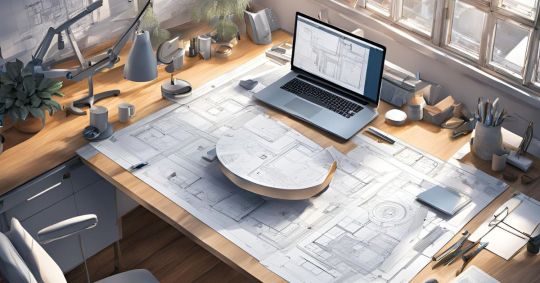
Importance of 2D CAD Drafting in Modern Architecture
2D CAD drafting services have become an integral part of architectural workflows, helping professionals overcome traditional design challenges. Here's why they are indispensable in modern architecture:
Precision: Every detail, from measurements to layouts, is highly accurate.
Collaboration: CAD files are easily shareable, ensuring all stakeholders are aligned.
Efficiency: Compared to manual drafting, CAD tools significantly reduce the time required to produce drawings.
By integrating 2D drafting and 3D BIM Modeling Services, architects and engineers can move seamlessly from conceptual design to execution while maintaining accuracy and consistency.
Benefits of 2D CAD Drafting for Professionals
For architects, engineers, and contractors, architectural 2D drafting offers numerous benefits, including:
Enhanced PrecisionAccurate drafting reduces errors during construction, ensuring smooth project execution.
Streamlined WorkflowWith 2D drafting and Architectural Design Visualization Services, teams can transition from design to documentation more effectively.
Cost EfficiencyOutsourcing 2D CAD drafting services reduces overhead costs, as there’s no need for maintaining an in-house drafting team.
Flexibility and ScalabilityProjects often require revisions and updates. CAD drafting ensures that modifications are quick and hassle-free without disrupting the entire workflow.
Professionals across industries leverage these benefits to optimize their design and construction processes.
Applications of 2D CAD Drafting
Architectural 2D drafting services have a wide range of applications in design and construction, including:
Floor Plans: Clearly defined layouts for residential, commercial, and industrial buildings.
Elevations: Detailed visual representations of exterior facades for presentations and approvals.
Technical Drawings: Accurate documentation that provides contractors and engineers with essential construction details.
To cater to complex design needs, Architectural CAD Design and Drafting Services provide tailored solutions for architects and engineers, enabling seamless integration of technical precision with creative concepts.
Industries Benefiting from 2D CAD Drafting
Several industries rely on architectural 2D CAD drafting services for achieving project success. Here’s a closer look:
ConstructionPrecise drafting reduces on-site errors, saving time and money during construction. Contractors depend on 2D drafting for creating accurate blueprints.
Interior DesignInterior designers use CAD drafting to create detailed layouts for furniture placement, lighting design, and more.
Real EstateReal estate developers benefit from professional drafting services to create detailed property layouts for presentations and marketing materials.
By relying on Architectural Documentation Services, these industries achieve precision, professionalism, and timely project delivery.
Leveraging Professional CAD Drafting Services
Outsourcing 2D CAD drafting services to experienced professionals can significantly optimize project outcomes. Here’s how:
Expertise: Professional drafters bring years of experience in handling complex drafting requirements.
Cost Savings: Avoid the expenses of maintaining in-house resources by outsourcing CAD drafting tasks.
Scalability: Services are tailored to meet specific project needs, ensuring flexibility and adaptability.
By leveraging Paper to CAD Conversion Services, architects, engineers, and contractors can focus on core project responsibilities while ensuring that designs are accurate and construction-ready.
Conclusion
Architectural 2D CAD drafting services are indispensable for achieving precision, efficiency, and collaboration in modern design projects. From floor plans to elevations and technical drawings, these services provide a solid foundation for successful project execution.
If you're looking to enhance your project outcomes with professional drafting services, get in touch today to see how we can help bring your vision to life.
2 notes
·
View notes